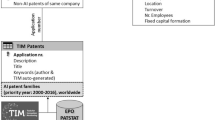Abstract.
This study attempts to explore how an industry evolves over time based on a case study of the motorcycle industry in Japan from 1948 to 1964. Using individual firm data, we estimate the determinants of technology improvement and firm growth separately for different development phases, after controlling for the probability of firm survival. We find that the industry’s rapid growth in the early phase can be explained by massive entry and the imitation of simple technologies, whereas sustained growth in later phases can be explained by innovations and subsequent imitations, as well as the exit of inefficient firms.
Similar content being viewed by others
Author information
Authors and Affiliations
Corresponding author
Additional information
JEL Classification:
O14, L10, L62, N65
Correspondence to: Tetsushi Sonobe
We are grateful to Kotaro Horiuchi, Shunji Tanaka, Katsuaki Nishino, Michael Kevane, Uwe Cantner, and two anonymous referees for their helpful comments and suggestions.
Rights and permissions
About this article
Cite this article
Yamamura, E., Sonobe, T. & Otsuka, K. Time path in innovation, imitation, and growth: the case of the motorcycle industry in postwar Japan. J Evol Econ 15, 169–186 (2005). https://doi.org/10.1007/s00191-004-0239-3
Issue Date:
DOI: https://doi.org/10.1007/s00191-004-0239-3




